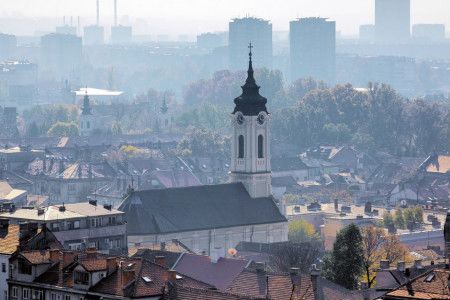Coalition 27, which brings together civil society organizations who monitor progress in Serbia's European integrations in Chapter 27 which refers to environmental and climate change, issued a statement on the results of the first meeting of the Working Group for air protection in the Republic of Serbia and statements issued by the Government of the Republic of Serbia on that occasion. We convey Coalition 27's report in its entirety.
Belgrade, 1/29/2020. - Coalition 27 expresses concern about the results of the first meeting of the Working Group for air protection in the Republic of Serbia, held on 21.01.2020. and the statements issued by the Government of the Republic of Serbia on this occasion. We consider that the plan of the Government of the Republic of Serbia diminishes the importance of the problem of air pollution and that the proposed measures are not in accordance with the official data of the institutions of the Republic of Serbia on air pollution itself.
Working Group told citizens that there is no reason to worry about the current situation, because the concentration of particles is close to average values for this time of year, but did not explain that it still means that the air in Serbia is over-polluted.
When comparing the data of the Environmental Protection Agency for 2016, 2017 and 2018, there is a trend of deterioration of air quality, which should caused concern of both the holder of public authorizations and of the Government of the Republic of Serbia.
In the period from October to December of the previous year, exceedances of the daily limit values for PM10 particles were recorded at almost all stations of the Environmental Protection Agency on which the concentration of this pollutant is measured. Valjevo and Kosjeric are leading in the number of days with excessive pollution in the period from October to December: the air was excessively polluted for 57 days in Valjevo and 54 days in Kosjeric, while in Belgrade the air was excessively polluted for up to 29 days (New Belgrade). The allowed number of days with exceeding the daily PM10 value at the measuring point is 35.
Excessive air pollution continued into January 2020 and was recorded at most stations measuring PM10 particles. In cities such as Uzice and Valjevo, average daily concentrations of PM10 particles were only one two days below the statutory limit of 50 mg/m3 for a period of 24 hours. Recorded concentrations of PM10 particles, ten or more times over the permissible daily limit value, were recorded in Smederevo, Uzice and Pancevo.
The fact that the air is over-polluted in the winter months as in previous years is a cause for concern, since it indicates that the authorities and institutions have done nothing to remedy this situation. Average over-polluted air is still over-polluted air.
It is worrying to say that there is no reason to be concerned about the current state of affairs, especially because of dara given by the World Health Organization, according to which almost 11,500 Serbian citizens die prematurely due to indoor and ambient air pollution, and that the costs associated with treating the health effects of air pollution in Serbia reach up to 33% of GDP. A report by the European Environment Agency shows that Serbia is at the top of the list of countries by the number of lives lost per 100,000 citizens. By comparison, Serbian citizens lose 11 times more their lives due to air pollution than Norwegian citizens. Air pollution in Serbia should be a cause of great concern for both citizens and holders of public authority who have a responsibility to solve this problem.
Another concern is the choice of measures to reduce air pollution in Serbia, which provide subsidies for the purchase of electric and hybrid vehicles, although there is no official data to justify such a measure. It is recalled that official data from the Environmental Protection Agency indicate that PM10 and PM 2.5 are the largest source of heat power particles less than 50MW and individual fireboxes, while the transport sector contributes only 6% to the increased concentration of these particles. When referring to individual combustion plants as the most significant sources of particulate pollution, it is important to emphasize that the majority of citizens who have individual combustion plants as a source of energy for heating are in a state of energy poverty, and that subsidy measures should cover above all this group of citizens. Data from the Central Bureau of Statistics and other surveys show that:
- almost 60% of households in Serbia use solid fuels for heating, and more than 50% of households own stoves whose efficiency is less than 40%;
- almost 90% of the poorest citizens are heated by solid fuels;
- 39% of households in Serbia only heat one room during the winter.
Taking this into account, it is clear that the subsidy measure for the purchase of private electric and hybrid vehicles by public money is not an adequate measure to eliminate the cause of air pollution.
We invite the members of the Working Group on Air Protection in the Republic of Serbia to define measures for reducing air pollution in accordance with the official available data on public sources, as well as to rely on the applicable regulations in the air quality assessment and public information: Air Protection Act and related by-laws acts, as well as the Law on Public Information and Media, which recognizes the true, impartial, timely and complete information of all citizens of the Republic of Serbia as a public interest.
The average excessively polluted air is still - excessively polluted air.
Photo source: canva.com

